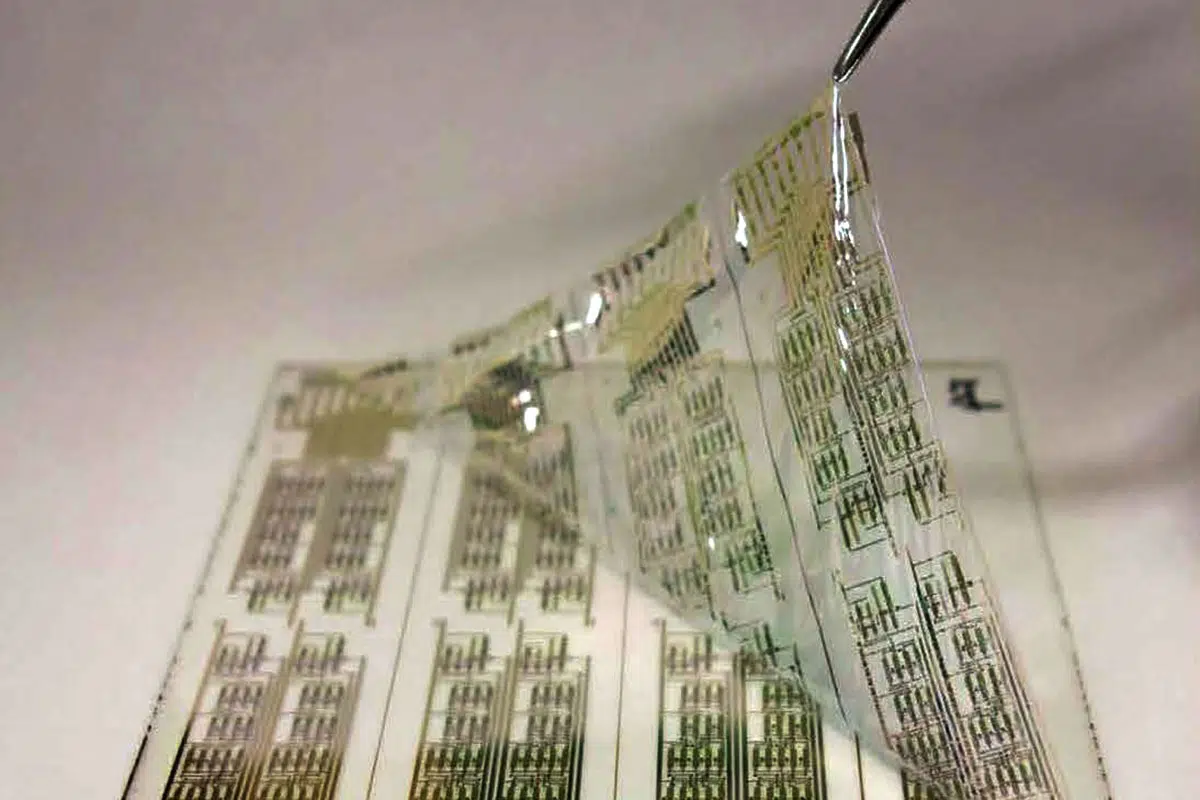Electronics manufacturing is on the cusp of a new era with the advent of organic semiconductors. With environmental regulations tightening, and consumers demanding green products, innovative manufacturers are discovering new, eco-friendly ways to make transistors and other semiconductors. These companies seek to tap into Mother Nature’s reserves to replace traditional components with easy-to-recycle materials. In addition, forward-looking manufacturers are developing new processes that are designed to lower energy costs, and use solvents that are far less toxic, making regulatory compliance easier.
The Building Blocks of Organic Semiconductors
Most of today’s semiconductors use a silicon wafer as the substrate (base material). Germanium is also used sometimes, but less commonly. Though silicon is nontoxic, it’s also in short supply, driving manufacturers to seek alternatives.
Glass, it turns out, is an ideal substrate for many types of semiconductors, and it’s become a popular choice for manufacturers. As with silicon, it can be used in chips that don’t require flexibility. With its low surface roughness, glass is a highly efficient choice and an abundant substitute for silicon.
But while glass is an environmentally friendly option, that may soon be a moot point. Both glass and silicon are rigid materials, and today’s new devices require chips that are flexible. And unfortunately, the most popular flexible substrate right now is plastic.

Biodegradable Flexible Electronics
Imagine a computer screen that you can unroll, or a solar panel that bends to fit the gables of a roof. These are just some of the coming applications made possible by flexible electronics. Already, this technology is being used to make car dashboard displays that curve and fitness trackers that wrap around the wrist.
These new devices—including wearable electronics, medical sensors, and solar cells—require ultra-light and ultra-small components. This is causing many manufacturers to move away from traditional silicon chips to semiconductors that use a more flexible substrate. Currently, plastic is the most popular choice. But from an environmental standpoint, plastic substrates are a step backward. Plastic materials may have ushered in new electronics applications, but they also contribute to environmental pollution when the devices they make possible are eventually discarded.
Fortunately, organic alternatives have emerged in recent years that can effectively replace plastic. Polymers like paper and cotton have proven to be effective and inexpensive conductors. Best of all, these renewable, natural materials are compatible with the roll-to-roll manufacturing that makes flexible electronics possible. Now, a paper substrate can be combined with other natural materials to make a semiconductor that’s both flexible and easily recycled—or even designed to biodegrade after a certain amount of time.
Eat Your Transistor
Traditional semiconductor manufacturing techniques rely on multiple toxic substances, including cadmium, tellurium, gallium, mercury, and arsenic. These elements are hazardous to both people and the environment. Even more concerning, research shows that the metallic particles used in semiconductor production can remain in finished products such as solar panels, where they can be picked up during handling and deposited on skin, or even inhaled. Replacing these substances—which can be found in the chemical compounds used as solvents—is a priority for those companies determined to produce nontoxic semiconductors.
Fortunately, innovative researchers are making progress in this area, developing organic substitutes for both semiconductor components and solvents. Some of these substitutes are found in common foods. Beta carotene, for example, has been utilized as a p-type semiconductor in organic transistors. Glucose and caffeine are also used in organic semiconductors. All of these materials have the advantage of low cost and high biodegradability.
Green Solvents: A Key Ingredient in Sustainable Manufacturing
Creating a semiconductor involves multiple complex processes: patterning, deposition, planarization, etching, cleaning, and doping. Some of these processes involve the use of hazardous chemicals like toluene, acetone, methylene chloride, xylene, chloroform, isopropyl alcohol, and glycol ethers.
These chemicals can be caustic and hazardous to humans. Many are known human carcinogens, and some of them—such as glycol ethers—are believed to cause reproductive harm. The use of these chemicals is one reason why semiconductors currently generate significant pollution during their manufacture.
But now a company in Germany called Merck KGaA (not affiliated with the pharmaceutical company) is setting out to change that. They’ve recently developed a green alternative to two highly toxic cleaners used in semiconductor manufacturing: N-methylpyrrolidone (NMP) and tetramethylammonium hydroxide (TMAH). The company is now looking to find eco-friendly alternatives to other harsh chemicals used in chip creation—urged on by semiconductor manufacturers who are trying to “green” the manufacture of their chips.
Soft Electronics: Brought to You by Organic Semiconductors
Replacing current substrates and semiconductor components with green alternatives—and doing the same for the harsh chemicals typically used in chip manufacture—is poised to usher in a new type of semiconductor that’s completely biodegradable.
Biodegradable electronics, also known as soft electronics, are expected to lead to an explosion in electronics devices designed to be worn or inserted into the human body. Soft electronics have predictable lifespans, and so naturally lend themselves to novel applications in the field of medicine. Using soft polymers, biodegradable metals, and other organic materials, researchers have created implantable medical devices that naturally dissolve and disappear over time, eliminating the need for removal surgery.
The field of soft electronics is new, but the number and type of devices being developed is growing—all of it made possible by organic semiconductors.

The Future of Semiconductors
The technology industry has long been accused of contributing to climate change by making products that gobble large amounts of energy during their lifetime. Now the industry is being called out for its manufacturing processes as well. On that front, at least, the future looks promising. Organic semiconductors are just the innovation that electronics manufacturers need to help them meet their sustainability goals.
